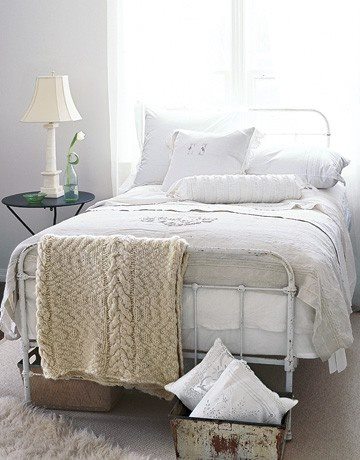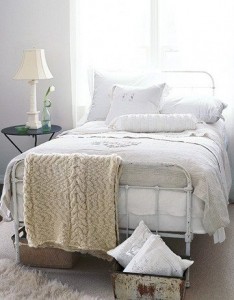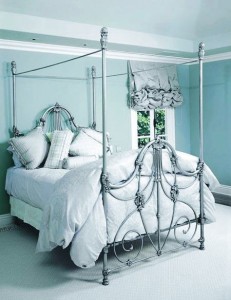As you probably know, the largest size antique iron beds being manufactured back in the 1800′s was a double/full. And you probably know that these antique iron beds can be converted to support a modern queen size mattress. But did you know that it can be accomplished in two ways:
The most difficult way is done by cutting the bed apart at strategic places and adding additional tubing to increase the width of the headboard and foot board. A full/double size is 54″ in width. So to achieve the queen width of 60″, another 3″ has to be accounted for on each side. We also take moulds of the original castings so when additional vertical rods are needed, we’re then able to pour those needed castings in our foundry. When we convert a bed in this method, it’s been performed in the same fashion in which the bed was initially put together close to 200 years ago. All the castings are hand poured and the moulds that are taken from the originals need to be expertly positioned by hand to give the same actual look and feel as the originals that will be positioned right along side them.
The second way, and by far the most common, is a simple Queen length conversion , in which none of the above is required. The reason being, the distinction in width between the antique double and the modern queen is practically unnoticeable…. as mentioned it’s only a couple of inches on both sides. So a width adjustment isn’t necessary like it is with a king. The way we account for the old double to hold the extended queen mattress is by welding in a section of angle iron to the side rails, that hold the headboard and foot board together lengthwise, longer by 5″. Once put together the box spring and mattress will set on top of
the side rails, not inside them, and extend over a couple of inches. Once the bed is appropriately dressed, and this is particularly important, that width difference is not noticeable.
I mention the significance of “dressing” a bed with a queen side rail conversion, because the slight width difference can be completely hidden with a dust ruffle and quilt or blanket. It’s vital to take the time to make small adjustments to a dust ruffle, so you’ll never see the width difference of the queen mattress. That alteration needs to not only be made in the drop length, which is always longer on an antique beds, but also on where the corner cuts are made. Because the width of an antique double is distinct from that of a queen width……..a queen size dust ruffle will need to have the corner cuts made for the double width bed, 3″ in from the corner. Creating those cuts will be where they would have been for a double size bed frame.
Both conversions perform well. It just depends on you and the look you’re happy with. But it’s nice to know iron beds , with a slight adjustment, can accommodate your new modern size mattresses.
I hope you’ve found this blog informative . I invite you to revisit my website
to answer any and all questions you might have about antique iron beds.
I also invite you to take a look at our company Face Book page for multiple photo albums on Custom Finishes, Canopy Conversions and a comprehensive “Before & After” King Conversions album.









